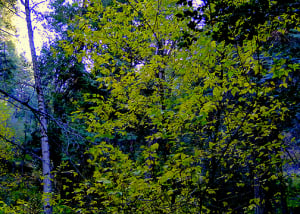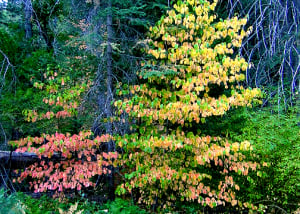First Report: Borrego Springs – Desert Surprise
As long as we’re desert-minded, color spotter Patricia Costa visited Borrego Springs this past weekend for the first time and reports she was “pleasantly surprised.”
Most people bypass Borrego Springs for Palm Springs, she writes, which is why “this place is sooooo nice!”
Patricia, we’ll forgive you for telling the world… or at least our readers… of the quiet beauty to be found in this special corner of Southern California, and we promise – as you requested – to “let’s keep this low, so just a few people enjoy.”
Did you read that folks, BORREGO SPRINGS! It’s BEAUTIFUL!! and UNCROWDED!!! and… Oops! We’re supposed to be keeping it low. Sorry, Patricia… we just got carried away.
Anyway, Patricia took State Highways 78 and 79 through Julian where she says there are “some very good colors already.” Between Julian and Decanso there’s more color, though give it a week or two to near peak.
Chamber’s Park at Lake Cuyamaca in Julian is showing peak yellow and red on exotics along shore, though other nearby trees are still patchy.
For those looking to drive a scenic backroad, we recommend the Sunrise Highway (S1) southwest of Julian through the Cleveland National Forest and passing Mt. Laguna, where black oak are often glowing in early November.
This is a scenic country drive in the high desert of San Diego County, not too curvy and 40 mph average along the route. You’ll find refreshing stops in Mt. Laguna and Julian. If you go, send us pictures and a report.
Patchy (10-50%) – Julian and Borrego Springs – Give it a week.





























